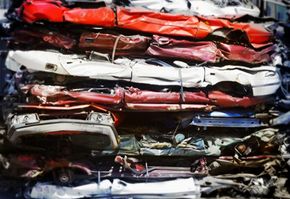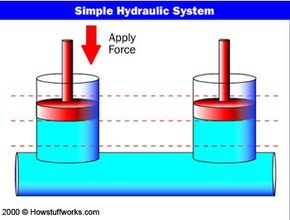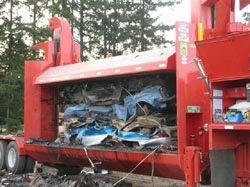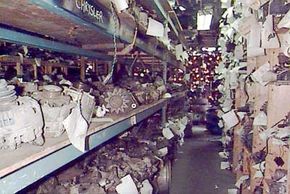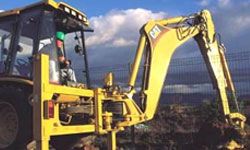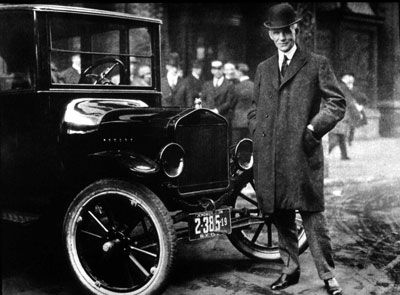For every beginning there's an end. Every shiny new car on the showroom floor will one day end up in a junkyard, its value no greater than the weight of the metal used to build it. North American auto plants built 15.8 million cars in 2005 -- all of which have to end up somewhere [Source: Business Week]. One of the most important stops an old car reaches at the end of the line is the crusher -- a massive machine whose only purpose is to compress a car into a tiny cube or flattened slab.
In this article we'll learn what a car crusher is, how they crush and why take the time to turn a car into a brick of steel.
Advertisement
A car crusher is a piece of machinery used to compress the metal remains of a junked car after it has been stripped of all useful parts. Compressing them takes up less space when stored, or when transported via truck or train to a recycling facility. A crusher is just one step of the auto-recycling process. They can also be used to compact other forms of metal waste, such as old appliances or even large machines like combines.

Crushers can be portable or stationary. Older machines tend to be stationary -- once they're set up in a scrap yard, they stay there. Today, most crushers are portable. They are built mounted to a standard-size truck trailer, and can be towed to various locations, set up, used to crush some things, then moved somewhere else. This helps cut costs for auto salvage yards - instead of buying an expensive machine, they can split the cost with other yards or rent time on a crusher that comes by once a week.
